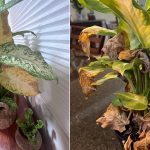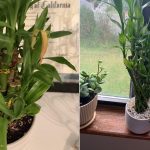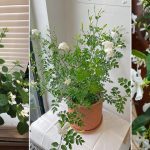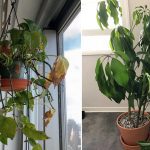If your heart belongs to both plants and cats, ensure your extra curious fur baby stays safe with the best cat-safe indoor plants!
Being a plant and a cat mom simultaneously can be quite a rewarding experience until it’s not. Your naturally curious kitty may go nibbling on a mildly toxic houseplant, and regular visits to the vet are the last thing you would want. But you don’t have to give up on either being a cat owner or houseplant lover, thanks to these awesome cat-safe indoor plants, which can even be of enjoyment for your furry friend!
Cat-Safe Indoor Plants
1. Baby’s Tears
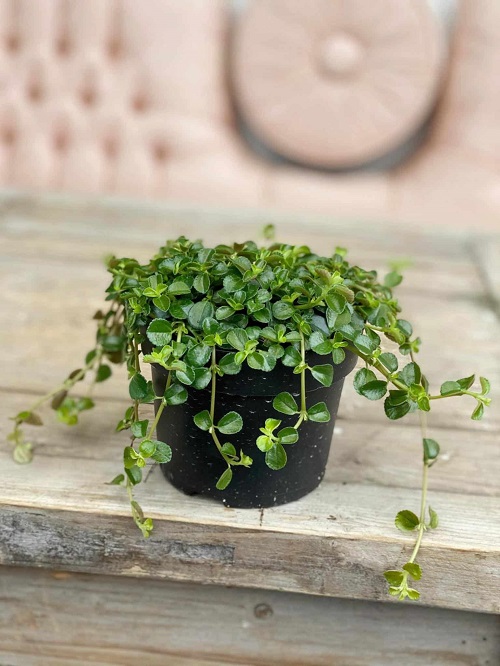
Botanical Name: Soleirolia soleirolii
Is your feline a little too curious, and somehow their explorations always lead them to nibble on your Baby’s tears plants? Well, the good news is that this houseplant is completely non-toxic. Plus, their creeping growth habit supported by tiny green leaves adds character to any spot and hence can be an addition to your pet’s personal space.
2. Chinese Money Plant

Botanical Name: Pilea peperomioides
While you have no reason to worry if your cat makes this plant its buddy, taking nibbles out of the delicate leaves occasionally, you might not want to compromise its aesthetics. This easy-to-grow plant has vibrant green, round leaves that flourish well in bright, indirect sunlight but also survive in moderate-to-low light conditions.
The best part is this plant literally indicates when you are not watering it enough, as you will see the leaves starting to droop.
3. Areca Palm
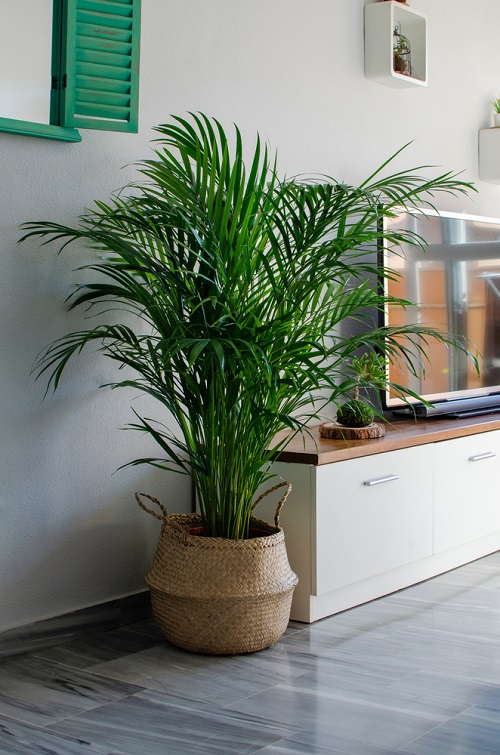
Botanical Name: Dypsis lutescens
Not only do the gorgeous fronds of this palm make your indoors feel like a trip to the tropics, but they can also become easy victims to your cat’s playful biting and setting instincts. And that’s where you can be at peace, as they are absolutely non-toxic to pets.
4. Spider Plant
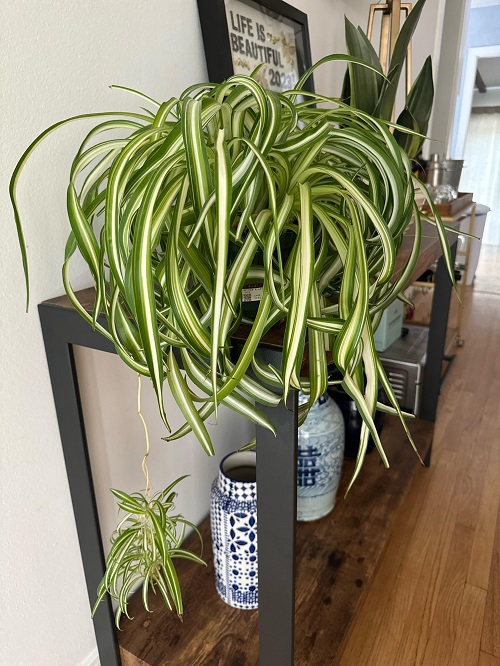
Botanical Name: Chlorophytum comosum
The Spider Plant is perfect for showing off in hanging baskets or on high shelves, thanks to its cascading foliage. And if you have a cat, they might find this plant particularly fascinating. Similar to catnip, it’s mildly hallucinogenic for cats but completely safe for them to nibble on.
Plus, it’s a tough plant that can handle a bit of feline attention without any fuss.
5. Echeveria
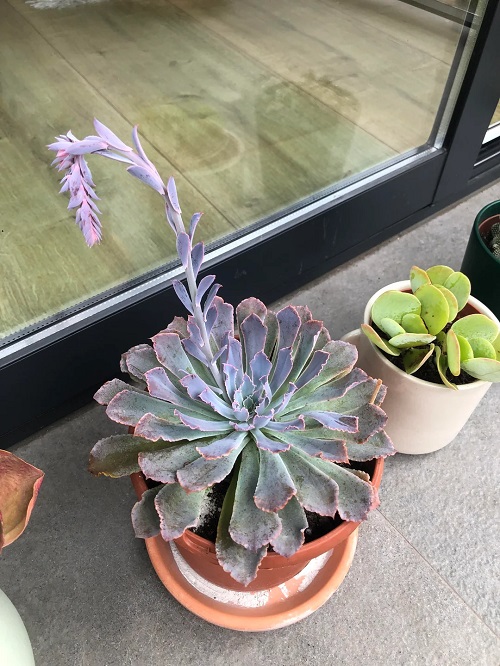
Botanical Name: Echeveria spp.
Echeverias are another cat-friendly option that might catch your pet’s interest. These succulents grow in beautiful rosettes with colors ranging from silver-green to blue-green, and even shades of lilac. They’re not only stunning and safe for your cats to explore, but they’re also low-maintenance, making them an excellent choice for busy plant lovers.
6. Peperomia

Botanical Name: Peperomia spp.
A popular houseplant with a very non-controversial, non-toxic, and pet-safe nature, the Peperomia Green won’t mind if your feline succumbs to its baser desires and takes a nibble out of this plant. The fleshy, succulent-like leaves do not contain any harmful substances. Plus, it requires minimal maintenance and can survive quite well in moderate indoor light conditions.
7. Peacock Plant
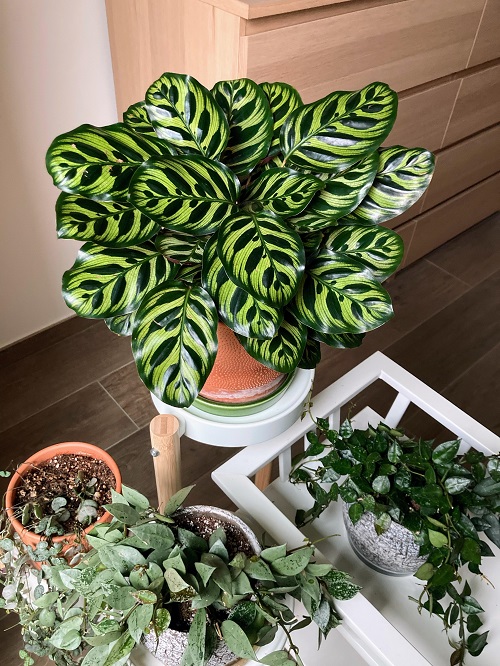
Botanical Name: Calathea spp.
Its large, striped leaves are likely to catch the eye of your curious cat, especially if they’re feeling bored or stressed. What’s great is that even if your pet decides to have a nibble, this plant is completely safe and poses no threat to your furry friend.
8. Gloxinia
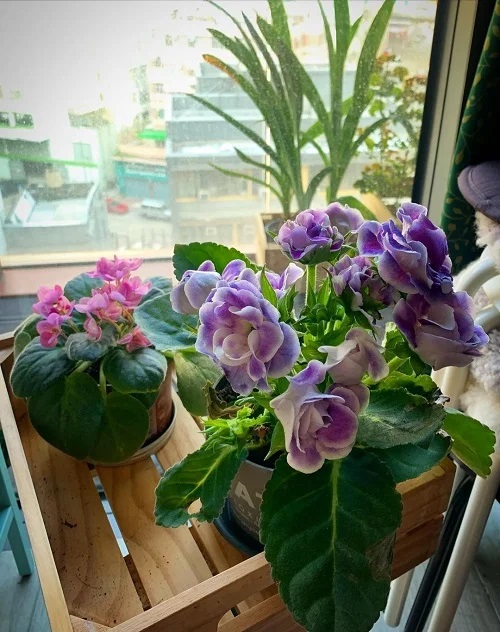
Botanical Name: Sinningia speciosa
Though cats are not herbivores, sometimes they just like the taste of Gloxinia leaves. Your kitty is pretty safe nibbling on its leaves while you enjoy its thick, ruffled foliage and its single or double blooms, which showcase pretty colors like lavender, pink, blue, red, white, or purple.
9. Nerve Plant
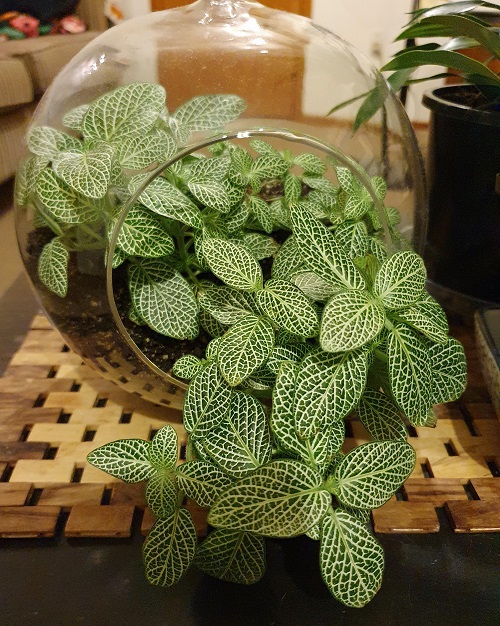
Botanical Name: Fittonia spp.
Are your cat and the coffee table the ultimate duo in your house? That’s where you want to have a Fittonia crowning your table. While it is a little challenging to grow, this air-purifying plant does quite well in a pot and showcases deep green, veined leaves with silver. It’s pretty safe if your kitten wants to gnaw on one of its leaves.
10. Banana Plant
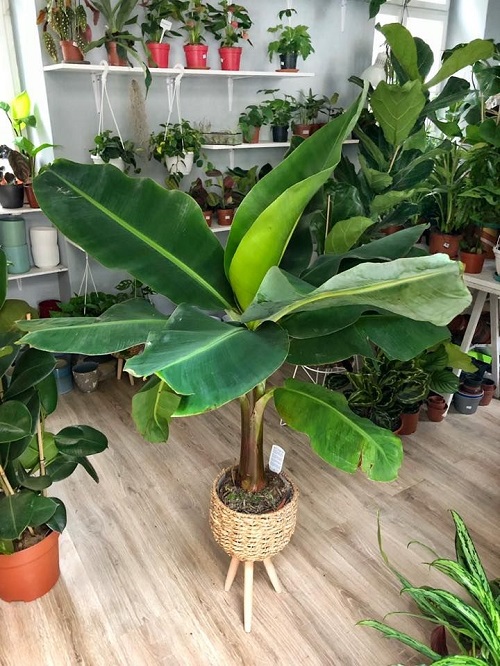
Botanical Name: Musa acuminata
Houseplants do not get safer than this! Deemed as non-toxic by the ASPCA, you might see the banana plant as a dramatic accent plant growing up to six feet or more with plenty of varieties! This tropical plant grows anywhere between two and four feet, so even if your curious kitty snacks on its leaves, you can quite well relax.
11. Venus Fly Trap
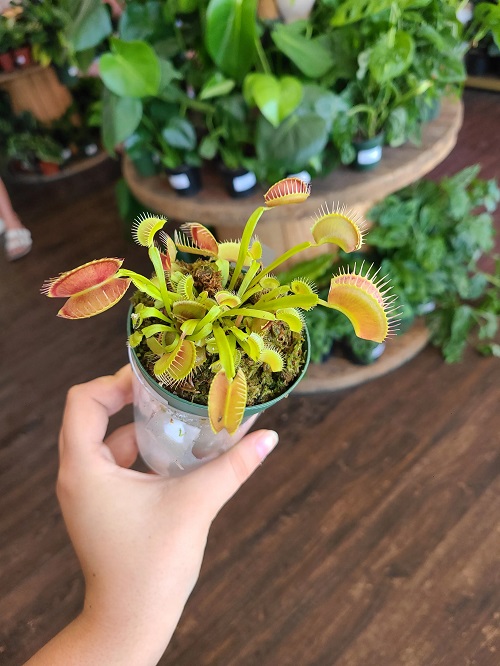
Botanical Name: Dionaea muscipula
As bizarre as it may seem, the Venus fly trap is a pretty cat-safe plant and poses a threat only to pesky insects attracted to its nectar! If your cat gets playful and intrigued by this plant and swats or eats it, well, you have nothing to worry about at all. Moreover, it survives well even in soil that is less nutritious.
12. Haworthia
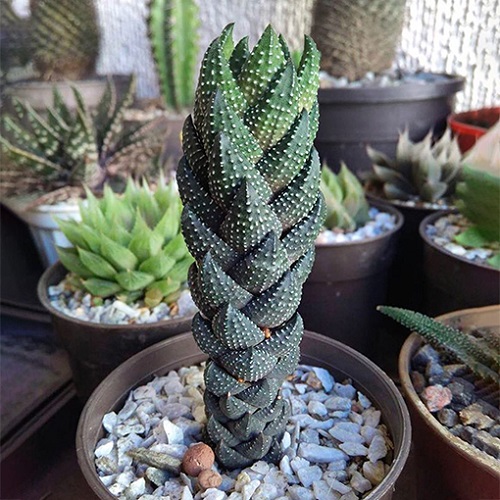
Botanical Name: Haworthia spp.
Commonly known as the zebra cactus, this easy-to-grow succulent is actually safe for cats, unlike other succulents that contain saponins and alkaloids. Placing it on a sunny windowsill is ideal for its growth, and don’t be surprised if it catches your cat’s eye. Whether they paw at it or even take a nibble, you can rest easy knowing it’s completely safe for them.
13. Bird’s Nest Fern
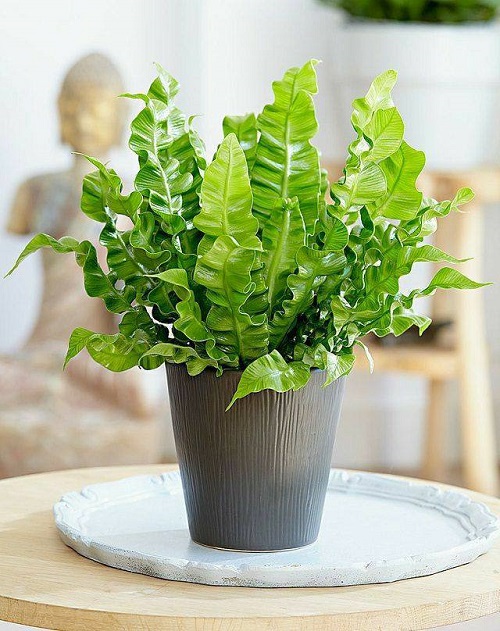
Botanical Name: Asplenium nidus
With a nice tickly texture of the leaves, the curious shape of the overall plant, and responsive foliage, your kitty will surely be attracted to this fern. The large, spoon-shaped leaves are not only cat-friendly but also resilient, quickly regrowing even if your curious cat decides to have a munch.
This makes it a perfect plant companion for both you and your feline friend!
14. Boston Fern
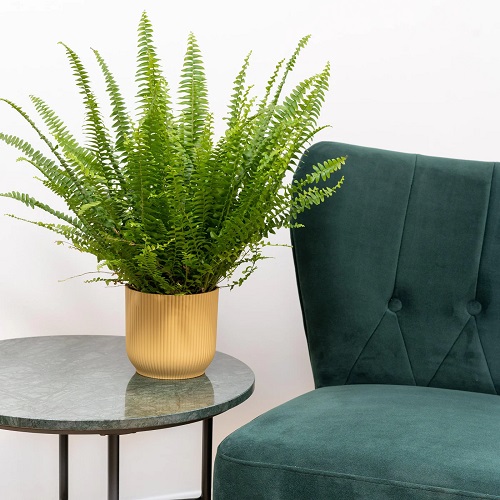
Botanical Name: Nephrolepis exaltata ‘Bostoniensis’
Their shaggy fronds are extremely tempting to pets like dogs and cats, and you might often find them chewing on the fronds, and that’s nothing to worry about! Sometimes, this plant is also known as the sword fern because of the way its foliage shoots straight up from the center of the plant and then starts arching down as the fronds start growing longer.
15. Polka Dot Plant
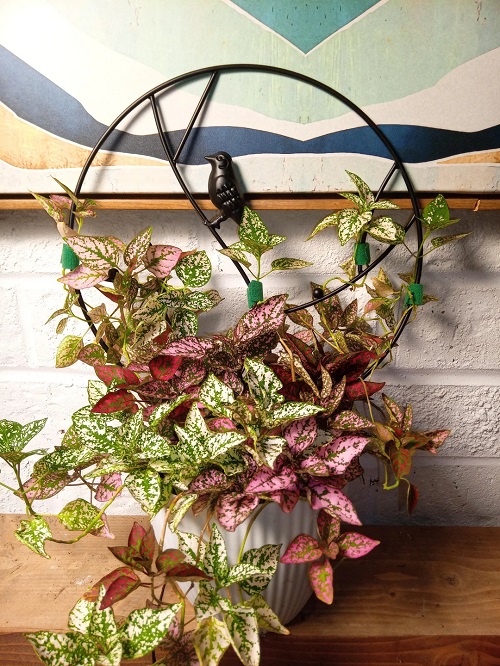
Botanical Name: Hypoestes phyllostachya
Its vibrant green leaves, adorned with pink spots, offer a luxurious and eye-catching appearance that’s not just tempting to humans but pets as well. The leaves are free of any harmful compounds, so there’s no risk if your cat decides to take a taste.
16. Prayer Plant
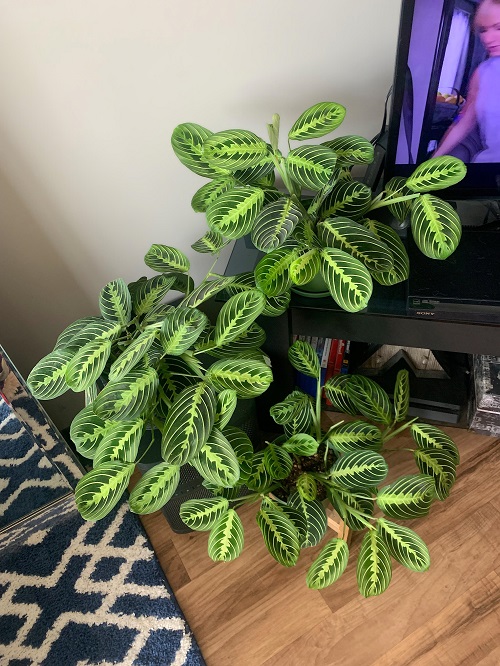
Botanical Name: Maranta leuconera
Your extra curious kitty would love how the prayer plant showcases its flat leaves during the day and then folds them up at night as if praying. But, even if it decides to play with the plant, you can be assured that there will be no adverse effects!
17. Air Plant

Botanical Name: Tillandsia stricta
Hardly a typical houseplant, Air plants are epiphytes, so they don’t grow in soil. You could either attach them to a solid surface mount or a board. Their stiff leaves will impress and intrigue your kitty, so try to place your plants where your cat can’t reach them, or you will find whole plants have disappeared or have been managed in a feat of late-night feline munchies!
18. Peperomia
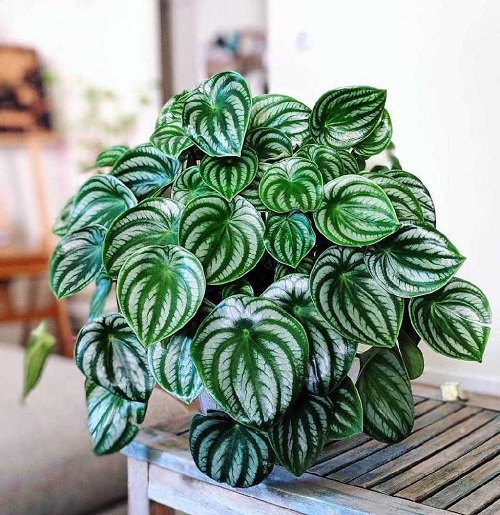
Botanical name: Peperomia spp.
Easily one of the most popular houseplants, the Peperomia plant species showcases many colors and textures. Due to this, they look great in containers, and their appearance doesn’t just attract us but appeals to dogs and kitties alike!
Your cat may have a thrilling urge to chomp down on one of its leaves, but thanks to the absence of alkaloids and saponins, this plant is completely non-toxic, especially cat-safe.
19. Purple Waffle Plant
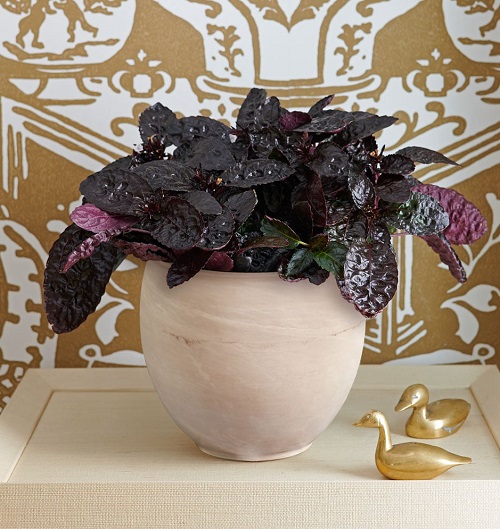
Botanical Name: Hemigraphis alternata
The interesting texture of the leaves and dense foliage would make your cat want to leap onto shelves or tables just to be close to the plant! It might also be that your cat is hatching a devious plan to eat the leaves. However, the bright purple-textured leaves of the plant pose no threat to your cat’s digestive system and, in fact, act as great air purifiers, too!
20. Friendship Plant

Botanical Name: Pilea involucrata
Put this plant on full display in your living room even if you have a cat at home, as it is one of the best pet-friendly houseplants you can have! With a rare texture and beautiful trailing habit of fragile stems, the friendship plant could very well be a victim of your cat’s ecstatic chomps! But this plant is a great reminder that pets and plants can definitely coexist.
21. Brazilian Orchid
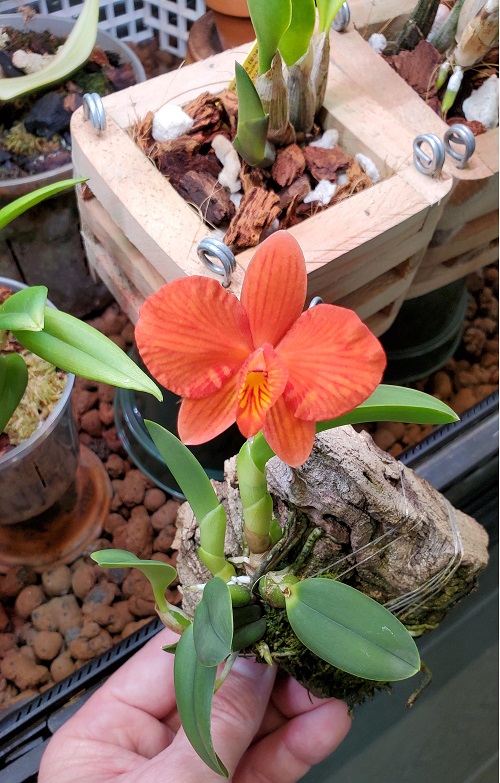
Botanical Name: Sophronitis spp
Getting a Brazilian orchid really shows off your taste in wonderful additions to your home when it comes to flowering houseplants. Apart from its beauty, here’s something you might not know—your cat might find the orchid’s taste, fragrance, or even its gently falling petals irresistible and decide to take a bite. Luckily, there’s no need to worry—this plant is completely safe for your furry friend!
22. Purple Passion Plant
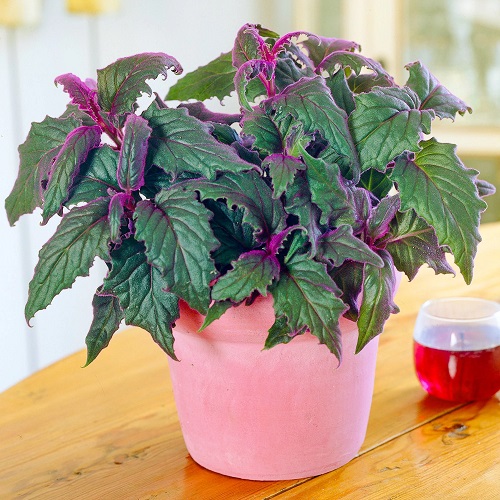
Botanical Name: Gynura aurantiaca
The velvety texture of the leaves caused by hairs on the surfaces can often incentivize your cat to munch on the plant or just explore it a little too often. Thankfully, this plant is completely non-toxic, so you can keep calm while having both your kitty and this plant at home.
23. Canary Date Palm
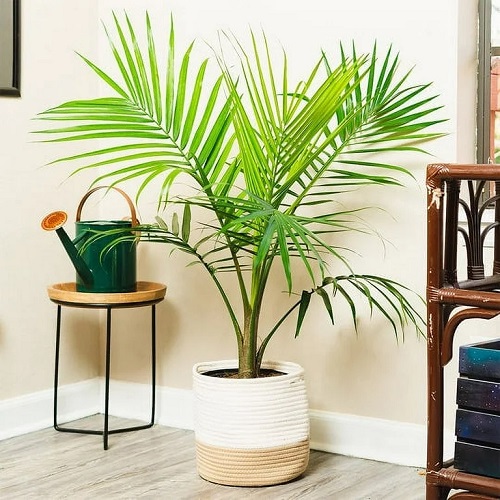
Botanical Name: Phoenix canariensis
When you introduce this palm-like plant to your houseplant collection, you’ll be pleased to find that it’s a hit with your whiskered friends too! Cats are naturally curious creatures, but thankfully, this plant is non-toxic, so the worst you’ll have to deal with is its less-than-perfect appearance if your cat decides to snack on the leaves.
There’s no need to worry about vet bills with this one around. Just place it in a sunny spot with some peat-based soil, and watch it thrive indoors.
24. Parlor Palm
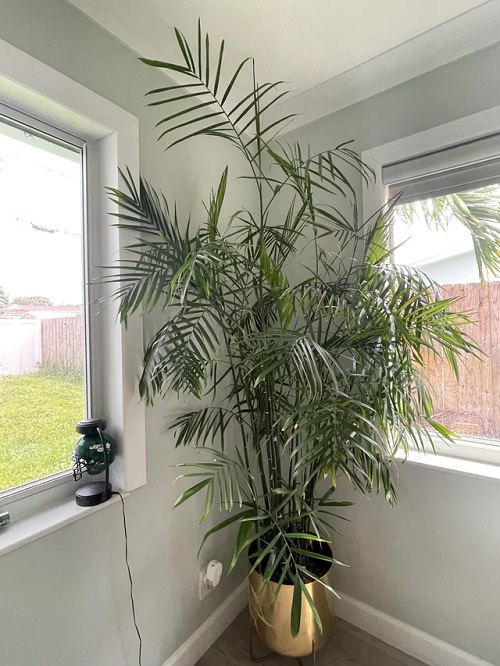
Botanical Name: Chamaedorea elegans
A vibrant, eye-catching tropical plant for your collection showcasing grass-green foliage, the Parlor palm adds instant drama to wherever you choose to display it. It is also extra entertainment for your cats, as you will find your kitty playing with its long fronds. Luckily, this plant is completely non-toxic to both cats and dogs and does extremely well as a floor-level showpiece, removing toxins from the indoor air, too.
25. Staghorn Fern

Botanical Name: Platycerium bifurcatum
Similar to air plants, the Staghorn fern uses other plants for support but stands out with its distinctive leaves that resemble elk or deer antlers. This makes it a dramatic and eye-catching choice for mounting on wood in your living room. And if your cat happens to take a liking to your fern, you can breathe easy knowing it’s completely safe for them to chew on.
26. Money Tree
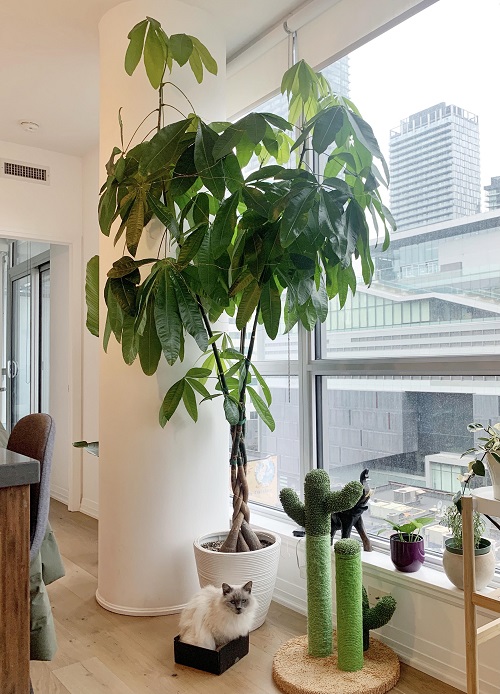
Botanical Name: Pachira aquatica
Quivering in the most gentle breeze, the long, green, shiny leaves of the money tree almost beckon to kitties to come and explore! With a reputation for bringing good energy into your home according to feng shui practices, the Money tree is a non-toxic plant with lush foliage that is completely safe for your cat to nibble on. The standout feature of this plant is the braided trunk, which has a very unique, sculptural look.
27. African Violet
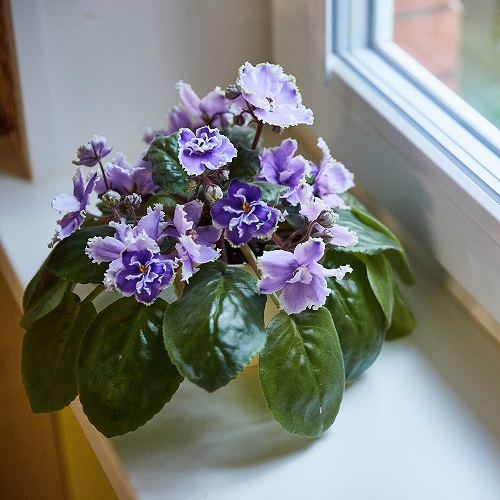
Botanical Name: Saintpaulia ionantha
Enticing to cats, the soft leaves of the African violet are not the only thing that this beautiful indoor plant has to offer. Besides showcasing gorgeous flower clusters of purple, white, and pink, this non-toxic, pet-safe plant is especially sought after in households because they can bloom in low light conditions and do just fine in moderate temperatures and humidity of indoor environments

